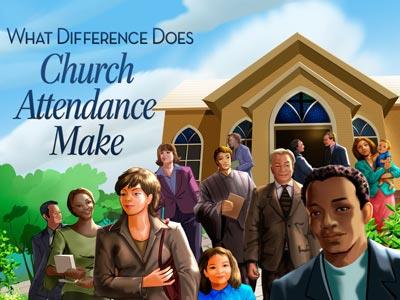-
We Are The Church
Contributed by Carla Powell on Nov 28, 2017 (message contributor)
Summary: Explores the four images of church/Christians in 1 Peter 2: infants, living stones, priests, chosen people.
Lectionary Texts for 5th Sunday of Easter - April 21, 2002
"We Are The Church" - 1 Peter 2:2-10; John 14:1-14
[Okay-say it with me…]"Here is the church, here is the steeple, open the doors, and see all the people."
That little kids’ rhyme and fingerplay holds some truth to it. The church is your hands, here representing the building. But the people are woven in to the building. So what is the church? Is it the building? Is it the people? Is it the institution? Is it an unachievable concept?
In today’s second lesson, Peter gives us at least four distinct images of the church or descriptions of Christians in this passage. Have you ever noticed that in a group of four different people, four different images may affect those four different people in four different ways? At the Thursday evening Bible study, we studied these four images, and they struck each of us in a different way. It’s as if Peter wants to make sure to get his point across to a whole range of people, so he uses four separate images of what the church is.
First, Peter says that we believers are like newborn infants, who need to be fed on pure spiritual milk. In its earliest form, this letter was most likely directed to adults who had been newly baptized. To call them newborn infants might sound like an insult, but Peter was pointing out that we are reborn in our baptism. As spiritual newborns, we must be fed easy-to-digest, nutritious food just as babies must have mother’s milk or formula in order to help them grow. The commercials for Carnation Good Start formula say that they have "Comfort Proteins", which are broken down into smaller bits to be easier to digest.
That’s sort of how it is with the faith. When a new Christian learns about the faith, he or she does not go to a seminary for a Master’s level degree first. No, first, he or she starts with the basics of the faith - What is baptism? How does Jesus save us? What promises does the Bible hold for me? It’s only after our system matures sufficiently that we can "digest" heavier spiritual foods. Imagine if your parents had never progressed you to solid food though. A 15-year old could not achieve his or her basic nutritional needs on that Carnation Good Start formula I mentioned. As we grow in the faith, we gain maturity to deal with deeper and deeper issues of faith. We must be always growing, always maturing, always adapting, so that we may be fed with pure, spiritual food in whatever stage of development we find ourselves.
Secondly, Peter says that we are living stones, who together make up the spiritual house of God. Perhaps you’ve heard the adage, "The church is not a building; the church is the people." One of our members has seen a slogan which said, "The building is dead; it’s the people that give it life." Peter uses the image of the living stones to describe the way that we are all built into one building through Christ. He doesn’t mean that the building is the most important part of our church’s ministry. Just the opposite, in fact. Peter says that God has chosen us as his raw building material, to be built together into the spiritual house of God.
Then Peter goes on to say that Jesus can be both the cornerstone and a stumbling block. To those who have faith, Jesus is the cornerstone, the most important piece in the foundation. To those who do not know Jesus, he may be a stumbling block, difficult to understand or accept. But to those who believe, Jesus, insulted, humiliated, and condemned to death on a cross, has become the very cornerstone. We can stand firm in faith knowing that our faith and hope are resting on Christ, the solid rock and cornerstone, on which the church stands or falls.
Third, Peter says that we are a holy priesthood, giving sacrifices and mediating between people and God. A priest is a person who has been set apart for God’s use and who has open access to the presence of the God. A priest acts as a representative before God in interactions with others. As believers in Christ, we have been set apart by God, we are able to approach the throne of God at anytime, and we pray on behalf of those around us. The Latin word for priest is pontifex, which comes from two words, "bridge" and "to make". The priest, therefore, is the bridge-builder, who builds a bridge between God and humans. We are called to minister to each other: to be there in times of need or concern, to build bridges between God and people. We don’t need another mediator between us and God; we have access to God ourselves.

 Sermon Central
Sermon Central



